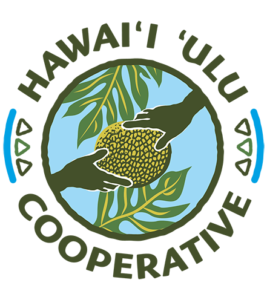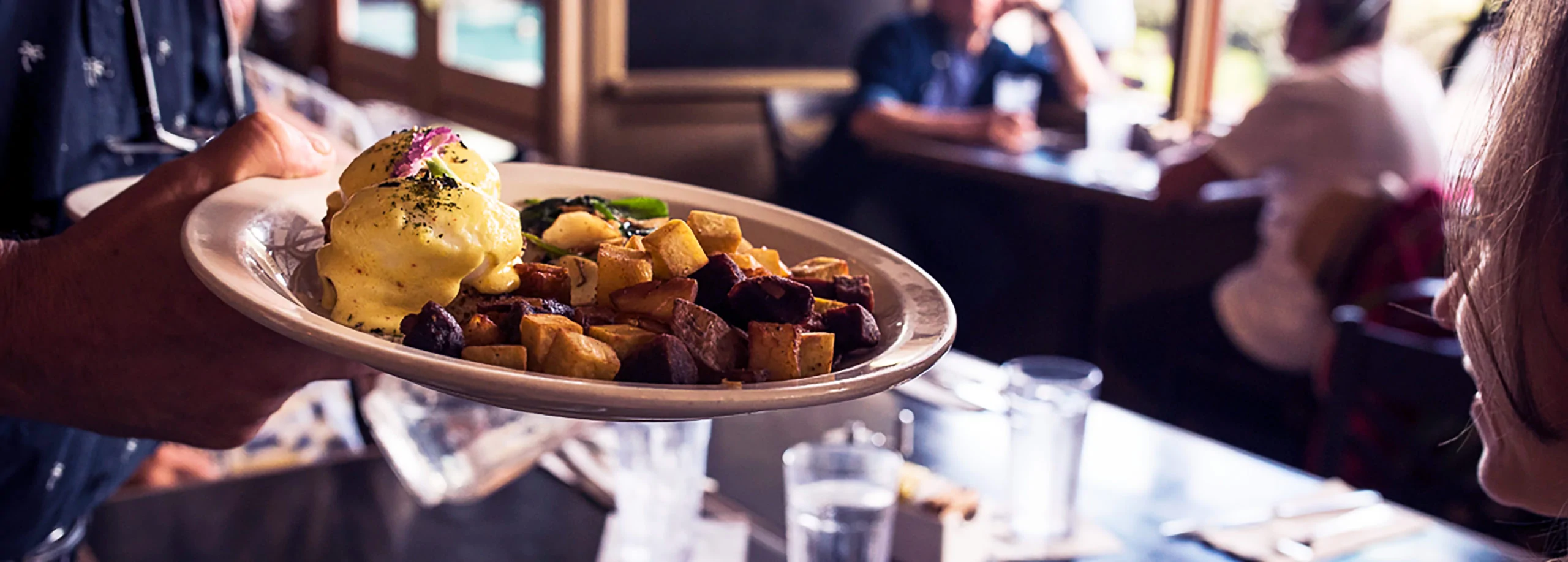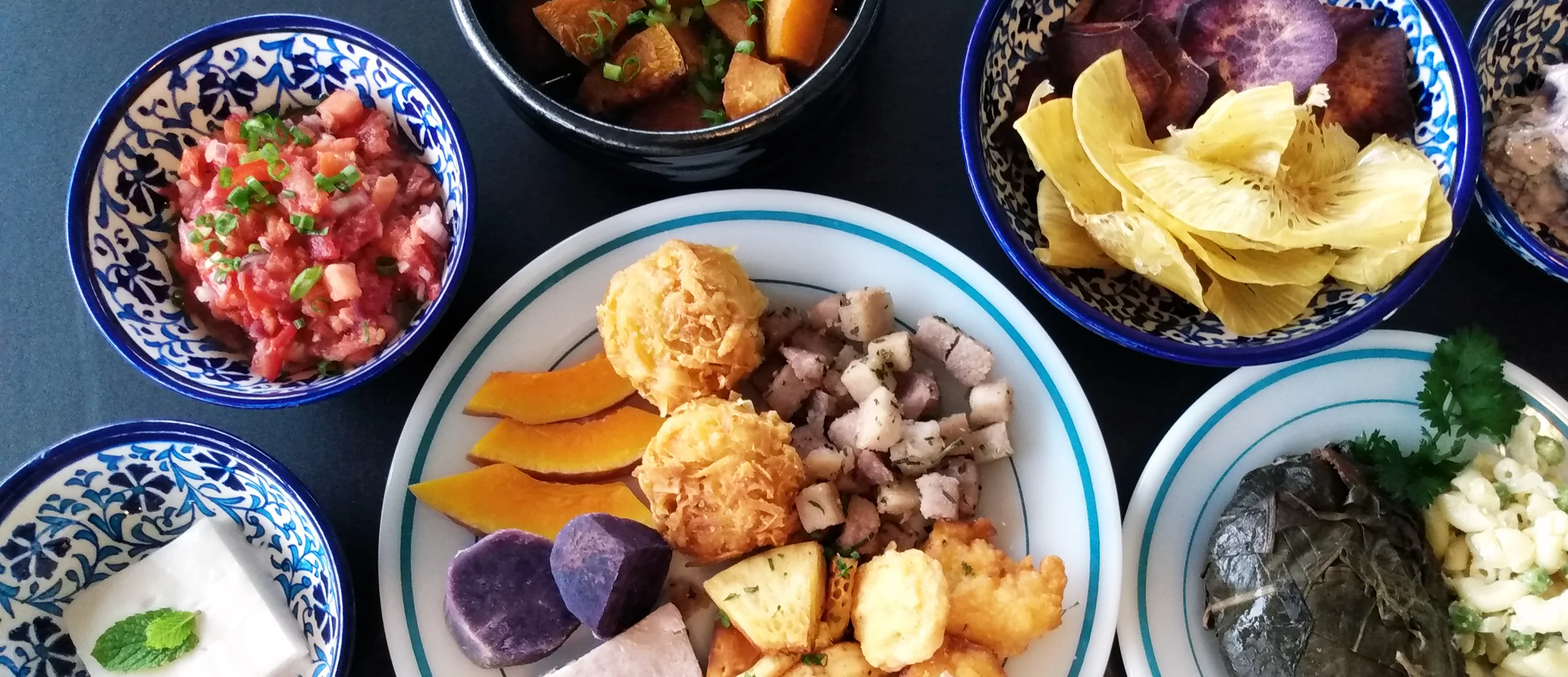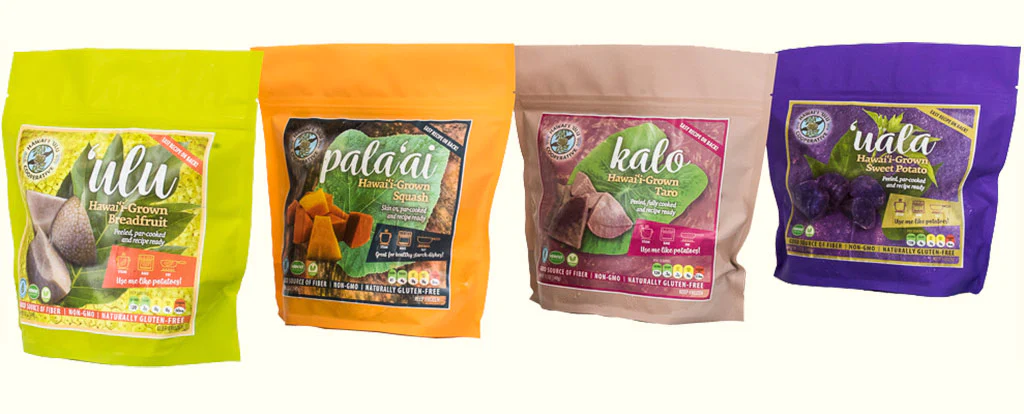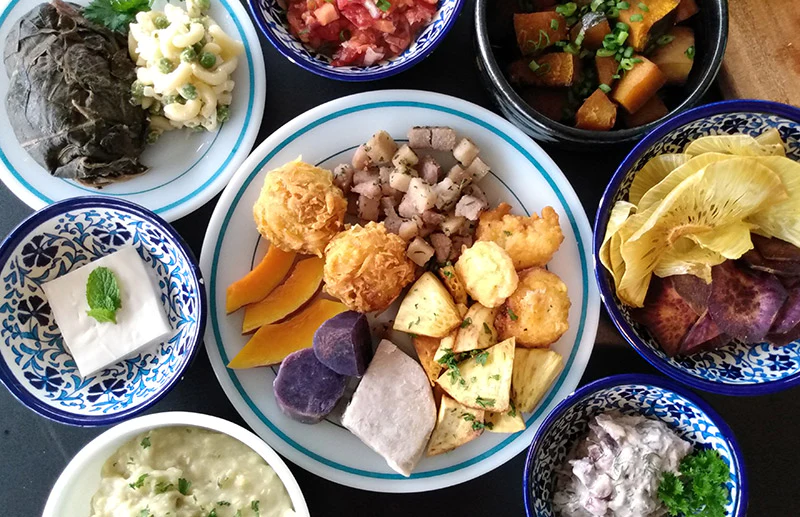Discover excitement in an unexpected part of your plate
If you’re an adventurous eater seeking new, delicious foods that align with your values, chances are you’ve mainly been searching in specialty categories like fair-trade chocolate, organic coffee, or artisanal snacks. But we’re on a mission to show you that the most exciting part of your plate is actually the most important – and overlooked:
Staples.
Staple foods like starches and grains provide the bulk of our energy and nutritional needs. Yet most of the world only eats three staple crops: corn, wheat, and Hawaiʻi’s favorite, rice – totaling about 60% of the world’s total calories!
A lack of diversity in our biggest food group isnʻt just boring, it’s risky.
A growing body of research links food diversity with human health. A lack of food diversity contributes to increases in adult mortality rates, specific diseases like cancer and diabetes, risk factors like hypertension, incidence of food allergies, and even depression.
Traditionally, dietary staples varied depending on what crops grew well locally.
In Hawaiʻi, a variety of healthy staples including kalo (taro), ʻuala (sweet potato), maiʻa (banana), and ʻulu were part of a highly nutritious local diet that combined lean proteins like fish and chicken with vegetables such as leafy greens and limu (seaweed).
Bringing back our cultural staples would not only improve health outcomes in Hawai‘i – where more than 10% of the population now suffers from diabetes, a largely preventable disease that costs local taxpayers $1.5 billion annually – but would also encourage more local production, reducing our near-100% dependence on imported staples. If we all substituted local staples as a healthy alternative to rice in just one meal per week, an estimated $35 million would be added to the local economy each year!
There are more than 50,000 edible plants on earth, many of them staples.
Our mission at HUC is to make it easy to incorporate more of Hawai‘i’s delicious and nutritious staple crops into your everyday diet. Diversifying our staples not only makes mealtime more fun, it strengthens our small farms and the planet’s diverse agroecosystems, and makes us more food secure (FAO, 2019).
Want to learn more about healthy, locally grown staples?
Check out our Why ‘Ulu? page to learn why breadfruit is the cornerstone of Hawai‘i’s food future, and About the Co-op to find out how our “farmer owned, ‘āina grown” approach is helping make Hawaiʻi more sustainble. Then Meet Our Farmers to learn about our growers and their regenerative agroforestry systems.
Curious about cooking with Hawaiʻi-grown staples?
Meet our ‘Ulu Ambassadors, cutting-edge chefs leading the charge to create unbelievable dishes with local ingredients.
Ready to diversify your diet?
Visit our Co-op Shop to get recipe-ready ʻulu, kalo, ʻuala, and other healthy staples delivered to your door in eco-friendly packaging. And be sure to peruse our ever-growing Recipes page for family-tested and -approved dishes – from pūpūs to desserts – that will help you become a local staples pro in your own kitchen!
Bottom line: if you’re looking to diversify your diet, consider Hawai‘i-grown staples as an overlooked and undervalued food group when it comes to variety – and you’ll discover more than you set out to find.
With our line of local, sustainable, recipe-ready staples, strengthening our bodies, farms, environment, and local food system is as simple as adding delicious ʻulu and more to your soups, salads, sides, and even sweets!
